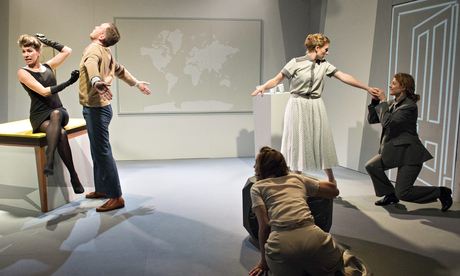
A young woman learns English from her 78 record of L'Anglais sans Peine. As she repeats the phrases, the dialogue's characters come to life, playing out a sexual fantasy about two couples at a 1950s suburban dinner party. The fantasy reaches its erotic conclusion while the voices on the disc conjugate the verb "to come".
The piece, A Party, is the central tableau of Triptych, a striking new work by Opera Erratica, an enterprising company founded by Patrick Eakin Young that operates through workshop collaborations in which composers and writers take their cue from the physical and vocal improvisations of the cast. Although Triptych follows Puccini's Trittico in comprising a comedy, a tragedy and "a nun piece", there's scarcely a trace of the original. The result feels fresh, daring and at ease with its various means of artistic expression. That said, the quality of the three pieces, each with a different composer, was uneven. A Party was the most effective in its mix of Thomas Smetryns's carefully structured soundscape - in which recorded dialogue, doubled by the live performers, is mixed with snippets of drawing-room music and physical theatre, and the company's technical virtuosity shows when scenes are reversed and fast-forwarded as the young linguist manipulates the disc to repeat a favourite joke. The final piece, a portrait of a photographer who disappeared mysteriously while photographing Louis Henry Sullivan's buildings, was touching, but the opening nun piece, in which the cast's excellent singing voices played the most prominent role, was distinctly underdeveloped.
Slickly presented, with a set designed around Gavin Turk's trompe-l'oeil pieces, the mixed quality did not detract from the sense of potential burning from these ambitious artists. I can't wait to see more of their work.
• The Print Room, London. Then at Wilton's Music Hall, London, 9-10 June.
• This article was corrected on 23 May 2014 because an earlier version referred to Arthur Sullivan's buildings, when it should have said Louis Henry Sullivan's buildings.

